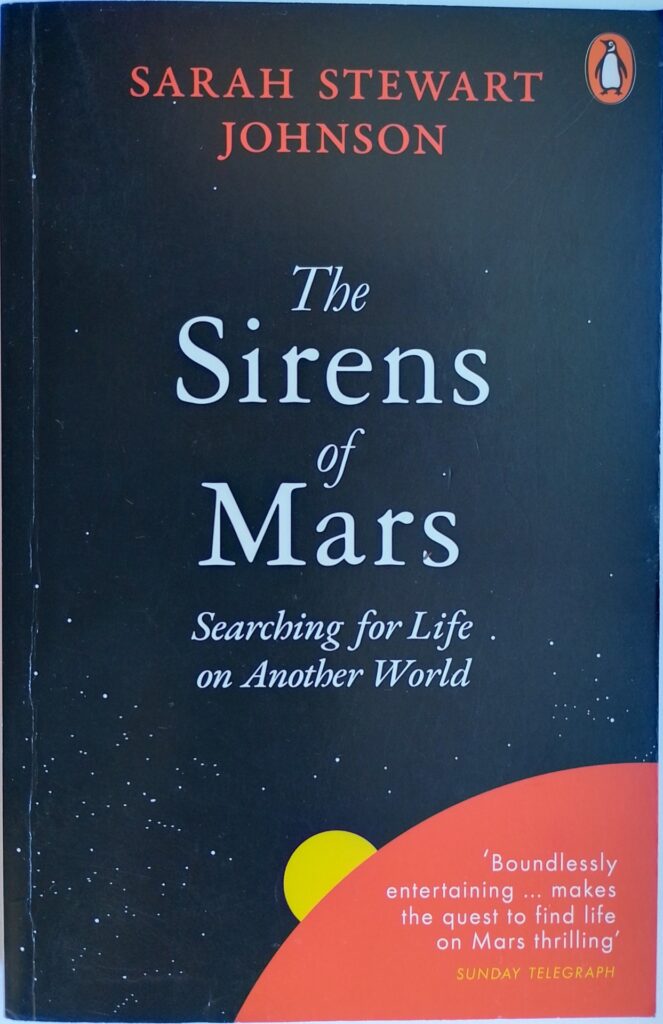First published 2020. Penguin, paperback, 2021, pp 266, c.70,000 words (main text).
This book gives a history of human interest in the planet Mars written by someone who developed a passion for the planet as a child, staring through her father’s telescope. She went on to work on NASA missions to Mars. The book, as the New Scientist reviewer noted, is in large part a memoir. Stewart interleaves her own history and budding interest into that of the planet. It is an engaging read and the two broad strands are well handled.
There have been many wrong turns in human understanding and exploration of Mars. There have been some wild miss interpretations of observations that lead many to believe the planet was inhabited by intelligent beings rather like us: probably diverting water from the poles to the parched equatorial regions, or perhaps the planet only had plant life with all those grassy plains. Then there were the string of exploration spacecraft that failed for one reason or another. Quite a few are splattered onto its surface, some sailed silently straight by, another arrived in orbit to photograph the surface while the largest and longest dust storm obscured it. Fortunately, more recently there have been a string of triumphs with all the recent American rovers successfully delivering stunning images and scientific data from some of the most interesting parts of the surface.
All through this story is the question: is there, or has there ever been, life on Mars? So far the answer has always been: we haven’t spotted any signs of it yet. We have convincing evidence that water once flowed in large quantities, carving immense canyons and filling substantial seas. The planet had a much denser atmosphere and its surface temperature would have been much warmer in the distant past than it is today. But the atmosphere and most of the surface water was lost to space, perhaps only a billion years after the planet was formed. What water that is left is locked up underground and possibly at the poles. That is where scientists such as Stewart are searching these days: if it still exists it will most likely be deep below the surface. If life once existed there, traces will be very old.
If life is ever found, either still extant or remnants from a distant past, then it will still not prove that life has independently arisen elsewhere than on planet Earth. It is possible that life could have been transported in either direction. Remember the notorious Mars meteorite that look as though it contained fossilised traces of something like a worm cast? President Bill Clinton was excited , but sensibly cautious about it on television. It is now thought to have been an odd material deposit that almost certainly formed without the aid of life.
Stewart’s own story is engaging but unexceptional. Once inspired she was single minded in her pursuit of her dream job at NASA working on Mars missions. The book is a primer on how ambition can be fulfilled by focus and hard work. There is a monumental list of sources included at the end.
The book is well written, in an accessible and engaging style. Yes, there is a lot of Mars in it, but so much of humanity’s involvement with the planet are reflections of our own desires and failings. The world of Mars exploration is a microcosm of the world of humans. Recommended.
© William John Graham, June 2022

